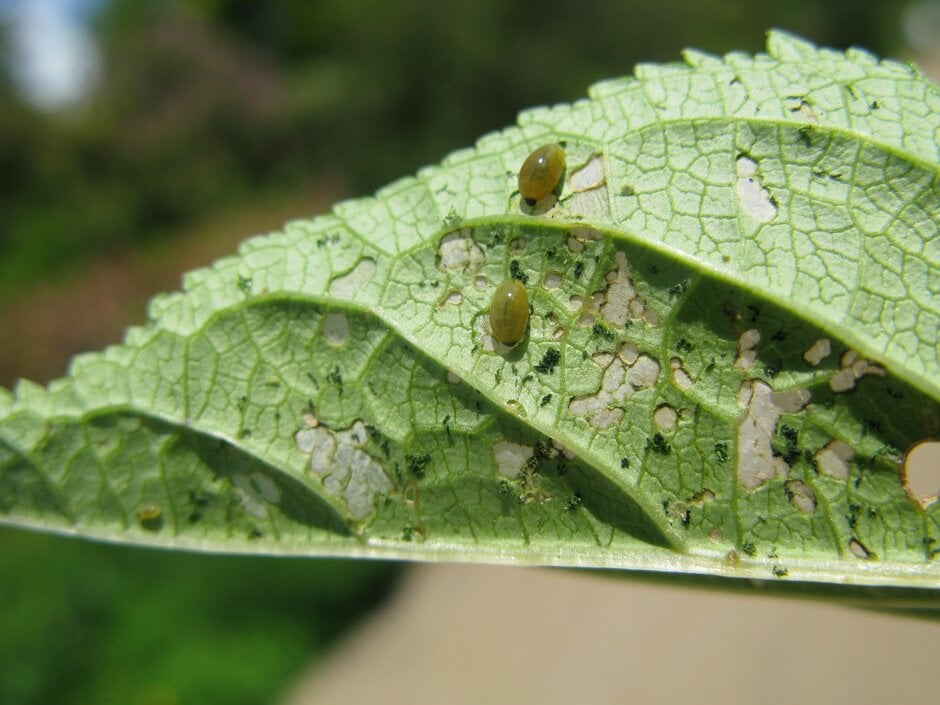Figwort weevils
Figwort weevil adults and larvae feed on the shoot tips and flowers of figworts, buddleia, Phygelius and Verbascum.

Quick facts
Scientific name Cionus and Cleopus species
Plants affected Figworts (Scrophularia), buddleias - particularly Buddleja globosa, Phygelius and Verbascum
Main symptoms Small greyish-white beetles with black circular marks on the wing cases and slug-like larvae. Leaves at the shoot tips and flowers are eaten
Most active May-August
What are figwort weevils?
Weevils are a group of several families of beetles in the superfamily Curculionoidea, there are more than 500 species in the UK. All feed on plant material, mostly live plants but a few feed on dry seeds (grain weevils) or rotting wood. Most do not cause noticeable damage to garden plants and several species are uncommon.
Figwort weevils are several closely related Cionus and Cleopus species of beetles. Both the adult weevils and the larval stage eat the foliage and flowers of Figworts, buddleias, Cape fuchsia and Verbascum. Read more about these beetles in the British beetles website
Symptoms
Plants most commonly fed upon by figwort weevils include Phygelius, Buddleja globosa, Scrophularia and Verbascum.
- Several species of weevil (Cionus and Cleopus species) partly eat leaves which can lead to foliage drying up, particularly at the shoot tips. Flower buds can also be affected
- The adult beetles are black and greyish white and are up to 4-5mm (about 1/8in) long, with one or two black circular marks where the wing cases meet
- The larvae are up to 6mm (about ¼in) long and yellowish-brown grubs with black heads
- The larvae feed on leaves by grazing the surface of the leaf. The remaining tissues can dry up and become brown or white
- Fully grown larvae spin spherical brownish cocoons on the plant stems in which they pupate, these can appear seed like
Management
Figwort weevils can affect the appearance of plants but do not usually reduce their vigour. Check susceptible plants frequently from spring onwards so action can be taken before a damaging population has developed.
- Where possible accept these weevils as part of the biodiversity a healthy garden can support or tolerate their presence. Damage to plants is often minor and they rarely cause long term damage to the host plants
- Where feasible the weevils and larvae can be removed by hand picking
- Encourage wildlife in the garden, such as birds, frogs and predatory ground beetles who will eat the larvae and sometimes the adult beetles
Biology
- Adult weevils overwinter in soil, leaf litter and other sheltered places
- They emerge in May and June when they seek out host plants on which they lay eggs
- There are two generations during summer between May and late August
- When fully grown, the larvae spin spherical brownish cocoons on the plant stems in which they pupate
- These cocoons closely resemble the seed pods of figwort
See also...
Protect your garden
RHS statement on pesticides in horticulture
UK beetles information on true weevils (Curculionidae)
Get involved
The Royal Horticultural Society is the UK’s leading gardening charity. We aim to enrich everyone’s life through plants, and make the UK a greener and more beautiful place.